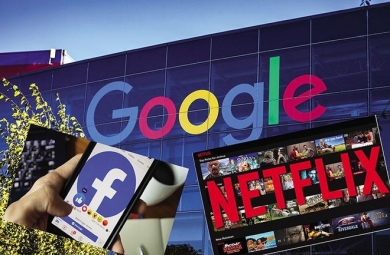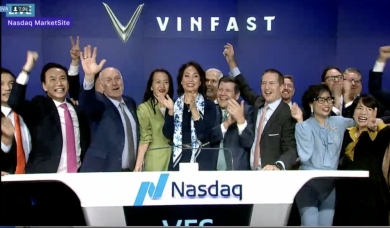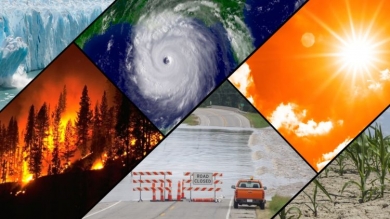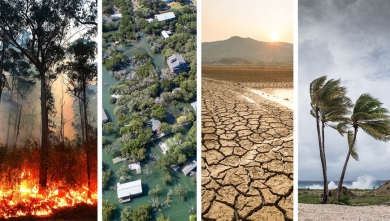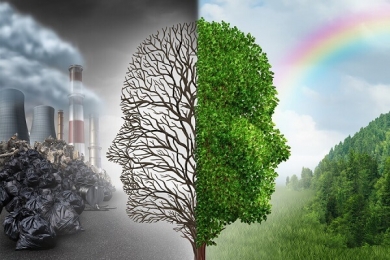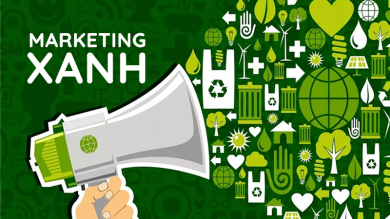There are more organisms in the sea, a vital producer of oxygen on Earth, than planets and stars in the universe.

Facultative Works for Noema Magazine
The pioneering cartographer of the human genome, Craig Venter, discusses synthetic biology and his new book, “The Voyage of Sorcerer II: The Expedition That Unlocked The Secrets of The Ocean’s Microbiome,” with Noema Editor-in-Chief Nathan Gardels.
Nathan Gardels: Generative AI has been heralded lately as one of the great game-changing innovations of our time. I remember in one of our conversations years ago when you said already then that biology was becoming a computational science, opening a path to the “dawn of digital life.” What is the impact of the ever-more empowered big data processing of AI, particularly generative AI, on genomics and the potential of synthetic biology?
Craig Venter: So far, one of the greatest impacts of the use of generative AI has been in improving protein structure predictions, or 3D modeling of gene sequences. That is a big deal because it allows us to understand many of the genes with unknown functions that provide the various chemical signals that determine the growth, differentiation, and development of cells. As far as anybody can tell, the predictions coming out of generative AI seem to be a big improvement over existing algorithms.
In 2016 we announced the first synthetic “minimal cell,” a self-replicating organism, a bacterial genome that encoded only the minimal set of genes necessary for the cell to survive. But even at that quite minimal level we still did not know the functions of up to 25% of those genes.
We have a very substantial amount of biology left to learn, even though everybody was getting to the point where they thought we knew it all. As soon as you start to think that, you’re wrong. And so, AI tools, and certainly improved protein predictions, have been useful in helping to determine the structure and function of some of the unknown proteins that are essential for life.
We can’t design and create future synthetic living cells without knowledge of these unknown genes that encode the function of essential proteins. So we’re slowly making headway with these new tools.
Having said that, AI is only as good as the datasets it is trained on. And if you don’t know the answer to the function of genes to begin with, AI is not going to miraculously pull that out of the rear end of the computer. Yes, as I said, you can get hints by comparing the protein structures we know to these better-predicted ones. That is a helpful tool, but it’s not a savior. We have solved half of the 156 genes of unknown function that are essential for life.
What has most transformed genomics overall is the ever-increasing speed and decreasing cost of computation. With the amount of data we have, that is obviously essential. When we sequenced the first human genome in 2000, we had to build a one-and-a-half teraflop computer that cost about $150 million. Today that would cost only a few thousand dollars.
Now, reading the genetic code has gone from billions of government dollars in labs to $100 million at Celera to now only $200 to have your genome sequenced. That’s a radical change in the reading of the genetic code.
Writing the genetic code has lagged well behind, though there is very exciting new technology. Barry Merriman, co-founder of the company Avery, has developed a method of constructing and assembling synthetic DNA on computer chips, where each pixel can synthesize a separate chain of DNA. This potentially increases the rate of synthesis by at least 10,000-fold.
It took us 10 years to make the first minimal synthetic cell because there was so much trial and error. Many of our designs didn’t work because we were missing key components of biological knowledge. That took a long time because synthesis was so slow; we had to build an entire genome and test it. Then if it didn’t work, we had to take it apart and reassemble it adding other components.
With these new tools, potentially, we could make 1000 genomes at a time to readily see which one boots up and produces life. So, the rate of experimentation will be greatly enhanced, but it’s still trial and error. Either you have a gene set that leads to life, or you don’t. And just having one gene wrong at the minimal cell level meant the difference between life and no life.
But again, even with all the power and speed, AI can’t solve unknowns. It can just give us hints of what else to look at and look for.
“Reading the genetic code has gone from billions of government dollars in labs to $100 million at Celera to now only $200 to have your genome sequenced.”
Gardels: Yuval Noah Harari, the Israeli historian, says that generative AI has hacked “the master key” of human civilization — language and the ability to construct narratives. He worries that machines could one day author our narrative.
Your work in synthetic biology over decades, first mapping and then learning to read and write genetic code, is really hacking the master key of life itself.
In this sense, don’t you see synthetic biology as the parallel to artificial intelligence? Together they are fostering a phase transition in evolution.
Venter: In the broader sense and long run as you frame it, yes. But the difference between synthetic biology and ChatGPT, for example, is that biology is real. It is either alive or not alive. ChatGPT generates a fair amount of misinformation. That doesn’t work in the world of biology as it does in politics.
Gardels: There’s no fake news in synthetic biology.
Venter: You can’t fake life.
Gardels: What are the practical implications of synthesizing genes for healthcare, predicting disease or preventing disease?
Venter: We made the first synthetic vaccine for the H7N9 flu in 2013. We showed that by just synthesizing the DNA of that virus — which we did in four days and four hours — and feeding it into our digital biological converter, we could just send that information digitally. We had a receiver at the other end at Novartis, which immediately printed out the new molecule chain for the vaccine and scaled up production.
Much of what happened with the rapid development of RNA vaccines for Covid derives from the approach that we developed during that first vaccine synthesis. Our team made a large number of Covid mutational variants for the various companies to test their vaccines against to see if they covered those variants. It took us less than a week to make more than 50 synthetic variants.
So, the technology for writing the genetic code is revolutionizing what’s happening in the vaccine world.
With all the tens of millions of genes that we have discovered in the ocean, we are finding new metabolic pathways to building life that are teaching us a lot we haven’t known about chemistry. We can now synthetically reproduce those pathways for cells and potentially create a new revolution in manufacturing everything from building materials to pandemic vaccines. With new discoveries come new tools.
Gardels: Gathering more data through exploring the microbiome of the seas has been the aim of the years-long project you describe in your new book, “The Voyage of Sorcerer II: The Expedition That Unlocked The Secrets of The Ocean’s Microbiome.”
As a way of saying that the universal is contained in the particular, the poet Khalil Gibran wrote that “you are not a drop in the ocean, you are an ocean in a drop.”
You have turned that notion into a scientific endeavor, going around the world at different locations, collecting seawater and discovering for the first time whole universes of teeming life below. These in turn provide large data sets that can be processed to help discover the secrets of primordial life that will drive future advances of synthetic biology.
Does that fairly describe your project? What have you discovered? And what are the implications?
Venter: Well, those are certainly some of the goals and the hoped-for outcome.
Our project started like most things in science with a relatively simple question — “What is life?” — that is difficult to answer. After sequencing the human genome, I was looking around at other places to apply this new set of computational tools to understanding biology. As a sailor, swimmer and surfer my mind turned naturally toward the sea.
It was clear to me that the more genomes we had, the more it helped by comparison to interpret our genomes and to interpret life. Reports were that there was a very low diversity of life in the oceans. Up until DNA sequencing, the way we discovered new microbes was by looking for them under the microscope or growing them in culture.
But basically, if they couldn’t be grown in a lab culture, they were deemed virtually not to exist. Because of our limited tools, we were missing probably 99% of the biology of our planet.
With his fantastic observations, Darwin went around just to look and see what was there. The voyage of HMS Beagle to observe the world empirically was discovery science at its best.
“Changing the ocean temperature by only one degree can kill off certain types of bacteria that make life on the planet Earth livable.”
Today, that approach to science is put down by the establishment. If you don’t have a hypothesis, you can’t go out and just do “a fishing expedition.” But I decided to do just that: to take a barrel of seawater and filter it through several layers to collect everything from the tiniest viruses to microbes to diatoms.
Then, we took those filters and isolated all the DNA and RNA and sequenced the genomes. Our first surprising discovery was that thousands of organisms dwelt in just one small extraction of seawater. In just one barrel from the Sargasso Sea, we came up with over 2,000 species, 148 of which had never been seen before. We stopped sequencing at 1.4 million new genes just from one sample of seawater from the ocean.
When we published that study in 2004, everybody’s outlook on what was there changed. Of course, you can’t extrapolate from sampling and sequencing in one location to the idea that the ocean is a giant homogenous soup. So, we decided to launch a sailing expedition around the world, like the famous HMS Challenger in the 1870s, regarded today as one of the foundations of oceanography.
At the time of the Challenger expedition, the theory was there couldn’t be life below 18,000 feet. How they came up with that brilliant hypothesis, no one knows. At the time, the first transatlantic telegraph cables were being laid and more knowledge about the ocean bottom was needed.
Challenger went out to various locations across the world, stopping every 200 miles, and, among other experiments, dredged the bottom and pulled it up to see what was there. In every sample from the sea bottom, they discovered new life. There was life at every depth.
We decided to follow their example with the Sorcerer II. The reason for the 200-mile interval is that’s roughly how far a decent-sized sailing vessel can sail in 24 hours. So we did the same thing. We stopped every 200 miles, only instead of dredging the ocean floor, we collected 400 liters of seawater at each stop, filtered out all the organisms, put the filters in the freezer till we got to port and sent them back to the Venter Institute near San Diego, where they could be sequenced.
What we found, astonishingly, is that every 200 miles, 80% of the sequences were unique. The diversity is incredible. We discovered far more organisms in the ocean than there are stars and planets in the universe! Yet, we know we are only scratching the surface, even with the tens of millions of organisms we discovered at these sailing intervals.
These organisms produce about 50% of the oxygen that we breathe, so to survive we need to preserve that environmental resource. Changing the ocean temperature by only one degree can kill off certain types of bacteria that make life on the planet Earth livable. That’s why in the Seychelles, you have all these white sandy beaches. They look beautiful, except when you understand where they came from — coral reefs dying from warming seas that are killing off key symbiotic bacteria that kept the coral alive. What we are learning is that we are changing our environment to the detriment of the conditions necessary for survival.
Everybody’s worried about the sea level rise from climate change. That is certainly going to be important. But far worse will happen if we wipe out the producers of oxygen, as we see with these huge areas the size of the United States or Africa with no oxygen in them at all, dead zones in the ocean plus several-mile-wide islands of plastic that we sailed through.
We discovered massive life we hadn’t known about during our expedition. But we also discovered how important that life is for our existence and how we are damaging it.
Gardels: Did you run across obstacles in collecting samples near sovereign territorial zones?
Venter: One of the challenges we faced in our expedition concerned the ownership of genetic resources. We were arrested twice on our voyage, once by the French and once by the British.
Sailing from the Galapagos to the Marquesas islands in French Polynesia is one of the longest open ocean passages. The current moves at roughly one knot across the open ocean — carrying all those microbes and viruses that belong to all humanity — toward the Marquesas. But as soon as the current crossed within 200 miles of the islands, the microbes and viruses became so-called French genetic heritage, until the currents carried them out of French waters.
“We’re not going to synthesize in the lab anything near the quantity that will replace our ocean environment … We humans have to change, or we’re going to choke ourselves to death.”
And so, while they are briefly in the French domain, the French don’t want anybody else collecting them and making discoveries. They want French scientists to make those discoveries. More than that, I think they were afraid we were going to take samples near their nuclear test sites to show how much mutation had been caused by all the radiation.
After all, back in 1985 French intelligence agents sunk the Rainbow Warrior, a Greenpeace ship that was planning to sail into French Polynesia to protest their nuclear tests.
In our case, the U.S. Navy had to intervene and declare that we were a U.S. research vessel under U.S. government protection. Even collecting microbes and doing science these days is subject to outmoded nationalist notions.
Gardels: Maybe you will go down in French history as the “microbe pirate!”
On the climate point, if we are now understanding how we can synthesize the qualities of those microbes to produce oxygen, that’s obviously beneficial, at some point, for dealing with global warming, isn’t it?
Venter: Well, we could never reproduce what these organisms do at the scale of a planet covered mostly by oceans. The number of microbes that exist out there is like 10 to the 30th power. We’re not going to synthesize in the lab anything near the quantity that will replace our ocean environment. We can maybe come up with things to help decrease the pollution. But fundamentally, we humans have to change, or we’re going to choke ourselves to death by eliminating our oxygen supply.
Gardels: The discoveries you describe remind me of the discoveries of quantum physics. What appeared solid actually turns out to be composed of particles and waves in constant motion and interaction. What once were thought to be empty volumes of water in the seas akin to a desert is actually teeming with a seemingly infinite population of organisms that create and sustain the conditions of biological existence.
As you say in the book, we really live on Planet Microbe. Perhaps naming our era the Anthropocene is a misconception? The main players are actually the microbes. We live really in the Microbiocene.
Venter: That is true. The main players in the human body that have made the Anthropocene are microbes. We have colonies of microbes within us that help keep us alive. You’ve got different microbes in your mouth, even different sub-colonies around each tooth and on your skin. The fact is, we live in a microbial world. We’re visitors in it. We’re hosts in the microbiome universe. If we eliminate the microbes, we eliminate our ability to live.
But without these tools of modern science invented by humans, they were essentially invisible. Just as we began to think we knew most of biology, to the point where we could read the genetic code and design a cell by rewriting that code, we have found out that we don’t know most of biology. The more we know the more we realize what we don’t know.
Gardels: As a scientist, what does that teach us about the presumed centrality of humans on the planet?
Venter: Well, we play a central role in this sense: We can either ensure our existence or ensure that we will go away. The microbes are here to stay. They will change and evolve as necessary to survive.
One of the most surprising things we found through our literal and metaphorical voyage is there are two symbiotic drivers of the genetic mutation behind evolution: bacteria and viruses.
Sar 11 is a photosynthetic microbe that we found in thousands of variants. These organisms are constantly mutating, constantly evolving as sort of a cloud of species, not just one. If you take a milliliter of seawater, you will find a million of such bacteria, but there are 10 million viruses as well that help control the microbial populations. The last thing these viruses want to do is kill off their hosts.
So the viruses that infect organisms actually carry updated photosynthetic genes. In essence, they go in and update the operating software in their host cells to make them robust and keep them alive.
This creates some philosophical issues about whether the viruses are in charge. But viruses aren’t truly alive unless they’re growing in a host. It’s a grand scheme and nature where all these things are interdependent, not least within us human hosts. Each determines the functioning of the other.
“We can either ensure our existence or ensure that we will go away. The microbes are here to stay. They will change and evolve as necessary to survive.”
On their own, microbes will overpopulate. They will mutate themselves out of existence unless the viruses bring in new versions of the software and update it.
Covid, of course, taught most people the inconvenient truth that viruses can be horrible because they cause disease. Yet it is only the smallest fraction of viruses that affect humans in a disease-causing way. Mostly they’re part of the scheme that’s helping to keep us alive.
Gardels: They really are the carriers of information between species, the postman among all life forms.
Venter: Exactly, like a USB or CD for downloading new information.
Gardels: Back in 1975 at the Asilomar Conference on Recombinant DNA, scientists arrived at a consensus that human intervention should not alter the germline, where traits are passed down to the genome of future generations. Given the advances we’ve been discussing that can identify the function of genes and proteins to predict and prevent disease, will that still hold? Should that still hold?
Venter: Well, it depends on what species you’re talking about. We created a totally new species that never existed before with our minimal synthetic cell. Any such synthetic organism like that needs to be watermarked so it doesn’t get confused with the evolution of the natural world.
We put our institutional names and some quotes from literature in the watermarks of the genetic code we synthesized. We need to make sure we’re keeping track of all synthetic organisms.
When it comes to the human genome, we do now have good tools for changing the germline to eliminate totally devastating diseases like Tay Sachs or ataxia, a debilitating disease where you lose control over your muscles from a very early age.
The problem of intervention in such cases is that it is a slippery slope. Polls have been taken of young parents-to-be asking what they would change in their child’s genetic code if they could. The top responses were mostly superficial. They would change their height. Those parents who wanted their kids to be athletic wanted to change fast twitch to slow twitch muscles that support endurance.
In other words, they were interested in cosmetic effects, not whether we could eliminate devastating diseases from the human population.
So how do you start the path of intervention without causing a landslide of demand for either frivolous or frightening changes?
Above all, the main reason we should not go down this path lightly is that, for all the hype, we’re still at an early stage of interpreting the human genome. I said 20 years ago that we know less than 1% about the functioning of all the genes in the genome. And I don’t think we’ve seen much progress in this respect since.
Yes, we’ve seen a lot of progress in mapping and processing genomes. We started the company Human Longevity in order to better understand how the phenotype of an individual is shaped by the interaction of the genotype with the environment. But we just still do not have sufficient knowledge and understanding of the genome to assuredly go in and make changes that do not cause more harm than good.
Gardels: Everything that is changed changes something else in ways we can’t know.
Venter: That is the key thing to understand. We just still don’t understand our own biology very well.
For example, some people treat manic depression as a disease that has genetic causes. It would be great to get rid of it. But the argument has been made that the most creative people also fall somewhere along the spectrum of manic depression. So will we eliminate all those great leaps of creativity from the human population if we manage to eliminate the depression gene?
CRISPR is a great tool for advancing research, but it is not a magic tool. You can make specific changes in genes with it, but it has what’s called “off-target effects” that cause random changes in other genes. So if you think you’re correcting Tay Sachs disease, without measuring every other change in the genome that you’re making and understanding its effect, you could be causing far more harm than good.
We get caught up in the science fiction of “now that we have these magic tools, we can rewrite the human genetic code.” We are decades, if not centuries, away from having enough knowledge to be able to do that intelligently and responsibly.
Gardels: China is also pursuing pathways to synthetic biology just as you are. Where does China stand on its progress in the same type of research?
Venter: China is investing far more than the U.S. government is in genomics generally as well as synthetic biology. They obviously recognize that it’s the future of medicine and the future of manufacturing. If we don’t change the level and kind of funding that exists in the U.S. for such basic research, we’ll be learning everything about biology in the future from China.


